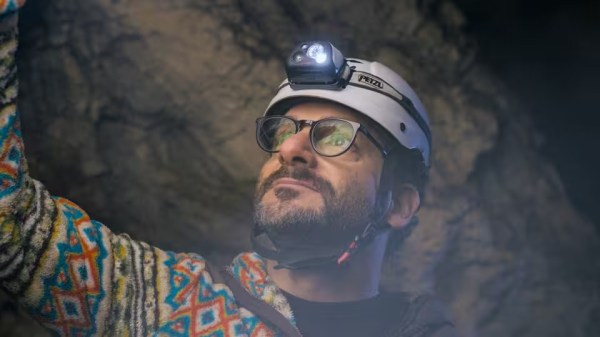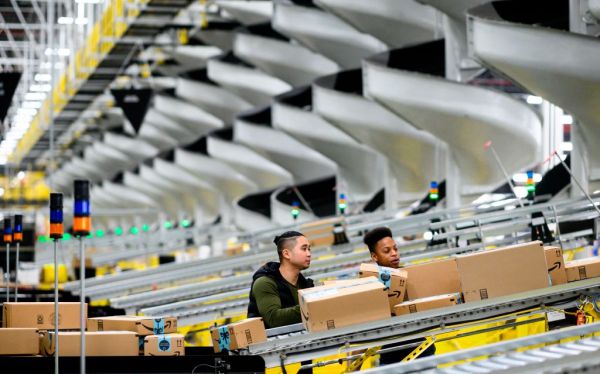Hi,
If I know my readers—and I think I do—most of you are familiar with the “What did the Romans ever do for us?” scene from Life of Brian.
But just in case:
The scene ends with John Cleese asking: “All right, but apart from the sanitation, the medicine, education, wine, public order, irrigation, roads, a fresh water system, and public health, what have the Romans ever done for us?”
Michael Palin responds, “Brought peace.”
To which Cleese responds, “Oh. Peace? Shut up!”
Meanwhile, in Soylent Green, they eat people. Oh, spoiler warning. Sorry about that.
They don’t eat people the way they do in Walking Dead or à la Hannibal Lecter or the Texas Chainsaw Massacre. It’s more dignified. I’ll explain.
In Soylent Green, released in 1973, the world is wildly overpopulated. New York City alone has a population of 40 million, with 20 million out of work. People sleep in the stairwells of pretty much every building. Nearly all familiar foods are scarce and wildly expensive. A single head of lettuce, two tomatoes and a leek will cost you $279. An apple is a luxury. A steak is almost unimaginable. The oceans are dying and the forests are all but gone. The air is thick with pollution and summer lasts all year long. Only the super rich have air conditioning, which most people don’t seem to know even exists. Food riots are a near daily affair, and the police quash the protests with converted garbage trucks that have giant scoops in the front that just, well, scoop up the screaming citizens and dump them into the back.
Life is so miserable, the government has set up massive euthanasia clinics. People who’ve had enough with the constant, daily misery of life check in, and they get to watch a few minutes’ worth of nature videos and listen to some music before they’re put to death, painlessly.
Oh, and because the oceans can no longer provide the kelp required to make the most popular food out there, Soylent Red and Soylent Yellow, the Powers that Be decided to secretly roll out Soylent Green, which is made out of the euthanized humans. Soylent Green is hugely popular because it’s more nutritious and tastier.
Oh, and this is all supposed to be happening in 2022.
Why the recap?
Well, because apparently a lot of people watch the movie today and say, “Wow, they nailed it.”
Or as The Economist puts it, “It is impossible to watch the film today without weighing up how accurate its predictions turned out to be.” It’s an “eerie prophecy.”
So I would have ignored the article, except I did some brief googling and it turns out The Economist’s correspondent isn’t alone. Apparently quite a few people can watch this Paul Ehrlich fever dream about the dangers of overpopulation and industrial cannibalism and marvel at its prescience. I missed the Washington Post’s tribute from last year, headlined, “In 1973, ‘Soylent Green’ envisioned the world in 2022. It got a lot right.”
The Post’s George Bass wrote:
In 1972, the Planet of the Apes franchise released its fourth film, “Conquest of the Planet of the Apes.” It’s set in the year 1991 and imagines Earth in the grip of a lethal pandemic. Draw your own AIDS/SARS/Zika/covid comparisons.
But “Soylent Green,” released in 1973 and based on a novel by Harry Harrison, was even more eerily prescient.
Well, yes, I suppose Soylent Green is even more prescient than the movie about the earth being conquered by intelligent, talking apes.
Mental Floss, Salon, and other outlets cover much of the same territory, straining to the point of herniation to check off one “accurate” prophecy after another.
For instance, because the anniversary coincided with the end of the pandemic and the supply chain panic, Jake Rossen of Mental Floss writes, the “shortage in consumer goods” in Soylent Green was another accurate prophecy. After all, “Even before the pandemic, consumers faced a brief shortage of Dawn dish soap.”
Who among us can forget the living hell when Dawn dish soap was momentarily hard to find?
When I read this stuff, I want to turn to the camera like Eddie Murphy in Trading Places when the Dukes explain that bacon can be found in a “bacon, lettuce, and tomato sandwich.”
Then there’s this:
During the pandemic, home fitness enthusiasts flocked to companies like Peloton, which offer stationary exercise equipment married to some kind of motivational tool—typically a screen with an effusive workout coach beaming in from an online studio. There’s an exercise bike in Soylent Green, too, but the motivation isn’t toning up. It’s so Sol Roth can generate electricity in their shared apartment.
Whoa, it’s like Hollywood has a crystal ball. Stationary bikes to get in shape for bikini season and exercise bikes to keep the lights on: Tomayto, tomahto.
I think Rossen is at least being a little tongue-in-cheek, but what all these pieces have in common is a pronounced need to point out that Soylent Green got climate change “right.” The other predictions are included to lend weight to the film’s prophetic powers and to hammer home the claim that climate change could make the world very much like the dystopia of Soylent Green.
It’s all such nonsense. But it is a fascinating Rorschach test. If you can watch this dark fable about a world where most people live in grinding, sweltering poverty, living off the emulsified and congealed corpses of euthanized masses, and think it gets the important stuff right about contemporary America—or climate change—you have issues. I particularly liked Rossen’s square-circling on the issue of Soylent Green’s industrial cannibalism. The movie, he writes, was “half-right” because a bunch of recent movies and TV shows featuring cannibalism have recently come out. “Soylent Green may not have anticipated actual cannibalism, but American culture seems to be consuming a lot of media about it.”
So, watching Yellowjackets (a Showtime drama about high school girls forced to eat soccer teammates after their plane crashes), gets us halfway to a society where humanity lives off human crackers. Got it. Does the popularity of Man in the High Castle mean that we’re halfway to living in Nazi-controlled America? How close are we to Running Man’s vision of the future because reality shows are popular?
Soylent Green was not, in fact, about climate change. It was about overpopulation. (It was loosely based on the novel, Make Room! Make Room!)
Without spending another thousand words revisiting how wrong the neo-Malthusian panic of the 1970s was, it’s worth noting that in the half-century since Soylent Green came out, food, energy, and basic necessities have become cheaper and more plentiful even as population has roughly doubled. In America, as the birth rate has fallen, homes have gotten bigger, making life even less crowded. Our air may have more CO2 in it, but it’s also gotten healthier and cleaner.
Famine and hunger still exist, but they are shrinking as a cause of death. And besides, they are not the products of population growth or climate change. They are the result of bad economics and bad rulers weaponizing food supplies. Americans have gotten richer, as has the world. Even income inequality is shrinking. Global population is still growing, but at such a shockingly slow rate, policymakers from Western Europe to China to the U.S. are far more worried about declining birth rates than anything we’d associate with overpopulation. Deforestation is a problem in some places, not because of climate change, but because of (arguably) bad policies in places like Brazil and Myanmar.
Yes, climate change has intensified, and that’s a serious thing. But summer doesn’t last all year long—and it never will.
It’s worth considering that all of this progress has transpired as climate change has gotten worse. No, global warming isn’t the source of our improving living standards, but you could argue that the things driving our improving living standards have contributed to climate change. Economic growth is heavily dependent on fossil fuels right now and will remain so for a good while. People can reasonably disagree about how problematic that fact is and they can have reasonable arguments about how to deal with the problem. I’d happily dump coal for nuclear power.
But reasonable arguments over policy are hard to have with people who think a movie about overpopulation, mass cannibalism, and state failure is “eerily prophetic” because the characters sweat a lot. It’s like arguing about the perils of artificial intelligence with someone who thinks all you need to know about the issue can be found in Age of Ultron.
Which brings me to that Monty Python bit. I look at Soylent Green and immediately see all of the things the movie got wrong about the future. And again, when I say “the future,” I mean the present. The people who watch it and marvel at the prescience sound like Cleese to me. “All right, but apart from the cannibalism, mass impoverishment and unemployment, widespread hunger, overcrowding, state failure, lack of technological progress, social acceptance of sex slavery, misogyny, industrial scale euthanasia, massively improved sanitation, air and water quality, what did Soylent Green get wrong?”
But I also think of the implicit ingratitude that Cleese was mocking. Technological innovation and market liberalism have made the world and America better over the last 50 years, and the Soylent Green-ers respond, implicitly, “All right, but apart from the declines in infant mortality, violence, hunger, sexism, pollution, and the increases in living standards, health, life expectancy, wages, food options, etc. what has technological innovation and market liberalization done for us?”








